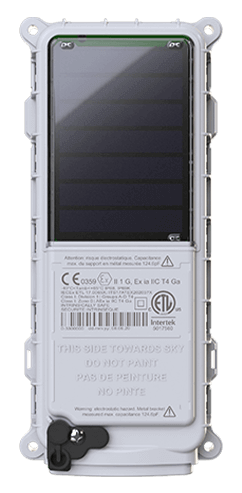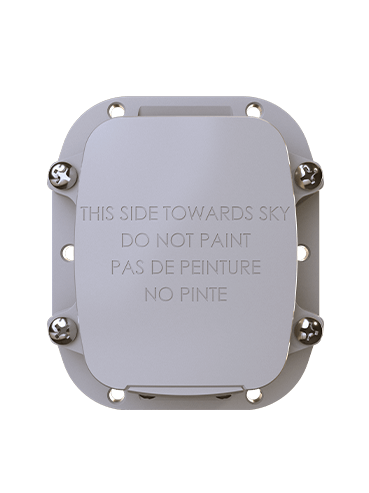Private Networks? Who Needs Them?
This question kicks off the first in a series of blog posts on the state of private wireless networks and how to accelerate their value to your organization.
In 2023, Robert Metcalfe received the $1 million Turing Award for a milestone he achieved in the 1970s. It was called Ethernet, a technology that used digital packets to transmit data over cables connecting computers. Metcalfe went on to found 3Com to commercialize it and launched the networking revolution.
A decade later, two computer science professors at Stanford realized that something their students developed, a routing technology based on Ethernet, could be used to connect their offices together in what became known as a local area network or LAN. They started a company to commercialize routers, naming it after San Francisco, the city where they lived. Cisco Systems sold its first product in 1985, went public in 1990 and started a furious pace of innovation and investment that bravely continued through the darkest days of the dotcom bust, from which Cisco emerged far ahead of its competition. From 1987 sales of $1.5 million, the company grew to $53 billion in 2023. Each innovation created major increases in the speed, efficiency and capacity of data routing.
Along the way, Cisco’s technology became the basis of every LAN, metropolitan-area and wide-area network, including one we know by a different name: the internet. Together, Ethernet and Cisco’s routing technology transformed the traditional business of telecom into what would be more accurately called “datacom” today.
The Evolution of Private Networks
The internet is a public network that interconnects us all. But the private enterprise networks that 3Com and Cisco Systems invented are still vital. They are secure and deliberately isolated from the internet or public cellular, and they only allow authorized devices and apps to connect and share data. Analysis Mason predicted that enterprise spending on LTE/5G private networks will reach $9 billion in 2028, up from only $1 billion in 2022. The 4,000 private cellular networks operating in 2022 will grow to more than 60,000 for the same reason that Ethernet and Cisco were so successful: the use cases and applications for them are limited only by our imaginations.As wireless technologies evolved, enterprise networks have gone wireless. Wireless networks in our homes and workplaces provide the last few meters of the last mile for digital traffic that is part of our daily lives: email and chat, social media and video, web browsing and powerful cloud-based applications. But they also meet much more specialized needs: the monitoring and management of industrial equipment, logistics, video surveillance and security systems, medical diagnostic systems, sensor networks and much more. They are critical to driving the automation and process virtualization that maintains growth in efficiency, productivity and return on investment. In doing so, they are also helping to drive the growth of our economy.
Use Cases for Private Networks
In October 2002, a Lufthansa 747-400 took off from Frankfurt on its way to Washington. Unknown to the rest of the passengers, members of a project team from Lufthansa and Boeing were aboard to test the first airborne private wireless network. They successfully connected a standard laptop to the onboard network, which gave it access via satellite to a secure, firewalled internet connection and, via a VPN, the Lufthansa corporate intranet.Today, when a commercial aircraft pulls up to its gate, it connects over a private wireless network with the airline’s central server to exchange data on flight plans, weather and system diagnostics, typically using Wi-Fi. But where Wi-Fi was once the standard, cellular has come into its own, particularly with LTE and 5G capacity and speeds. As a result, private wireless is showing up in some unexpected places. In US Formula 1 racing, teams are permitted to have only 60 engineers and technicians trackside at each race. To ensure they have all the expert analysis they need, the cars have private wireless connections to their pits, where trackside compute clusters typically link at over 80Mbps to “mission control” at HQ.
Formula 1 racing, however, is a narrow niche. Opportunities for private cellular networks with greater scale include –
- Manufacturing and industrial facilities, where interference creates serious issues for Wi-Fi.
- Healthcare in support of life and health support devices, patient tracking, inventory management, surveillance and security.
- Campuses for corporate offices and higher education, where a private cellular network offers blanket coverage that brings all operations under one network for greater control, security and reliability.
- Stadiums, arenas and convention centers, where capacity crowds make public cellular networks too congested to be useable but customer satisfaction, not to mention public safety, depend on reliable wireless.
At the extreme end are very high-capacity requirements in challenging environments where wired infrastructure isn’t feasible. These include:
- Autonomous mobile robots. Once kept in steel cages to protect workers, robots are increasingly mobile and autonomous in factories, warehouses and logistics facilities. They have come to dominate investment in warehouse automation – Amazon alone has grown its fleet of autonomous mobile robots 24x from 30,000 in 2015 to 750,000 today. In Micro Fulfillment Centers (MFC), they typically operate in multi-level metallic structures, navigating through ramps and vertical lifts among thousands of storage bins. To do their jobs, they need continuous connectivity with the management system wherever they travel.
- Digital twins. Digital twin applications are revolutionizing the cost and complexity of operating and upgrading major process plants, drilling platforms and urban infrastructure. Running in a virtual environment that duplicates the real one, they enable changes to be designed, tested and proven in software before the trial-and-error of costly real-world implementation. But the digital twin is only as good as the real-time data that drives it. That demands continuous connectivity for hundreds or thousands of sensors operating in heavy industrial and urban environments.
- Edge video. Video technology once meant a set of feeds from static video cameras, which sent either real-time video or a series of still frames, depending on available bandwidth. Today, real-time video is growing at double-digit rates to meet demand for safety, security and transparency in the public sphere. Cameras are everywhere, and they are increasingly capable of two-way communication to control what the camera sees and provide edge-processing for image recognition and the ability to generate alerts to activity that may demand action. One-way traffic has become interactive exchange, boosting bandwidth demand as networks expand their footprint.
Designing for Performance
Use cases offering scale have one thing in common. They take place – not within the calm and sheltered walls of an office – but in the rugged and dynamic environment of factories, warehouses, ports, industrial plants and urban infrastructure. Wireless private networks are the default choice for such locations and network design must answer a long list of questions, including:- Where do the wireless radio units need to be positioned and how will they be powered?
- What walls, metal structures and radio signals may cause RF interference, and how will the network design deal with it?
- What spectrum is available for the network and how does its performance match capacity, reliability and interference requirements?
- How will the network provide adequate information security, given the mission-critical nature of its traffic?
- How simple and cost-effective will it be to make changes and updates to the network as requirements change?
- What economics do the different technology options offer, not only for initial installation but total cost of ownership over years?
Can your private wireless network meet extreme bandwidth demand with less spectrum? Let us show you how.
 SmartOne Solar
SmartOne Solar SmartOne C
SmartOne C STX3
STX3 SPOT X
SPOT X SPOT Gen4
SPOT Gen4 SPOT Trace
SPOT Trace